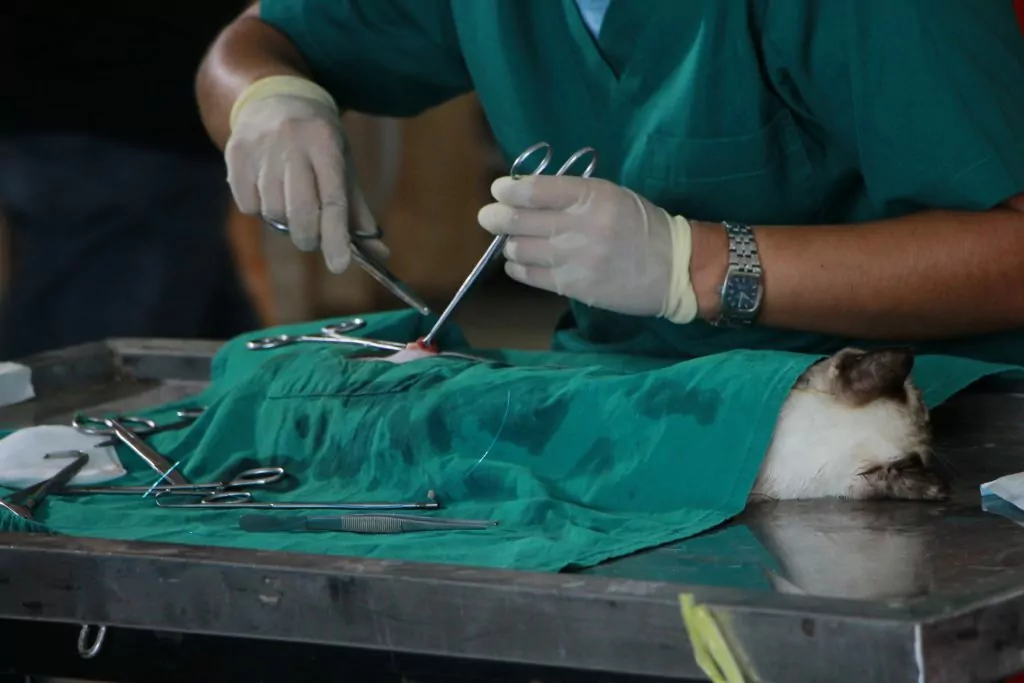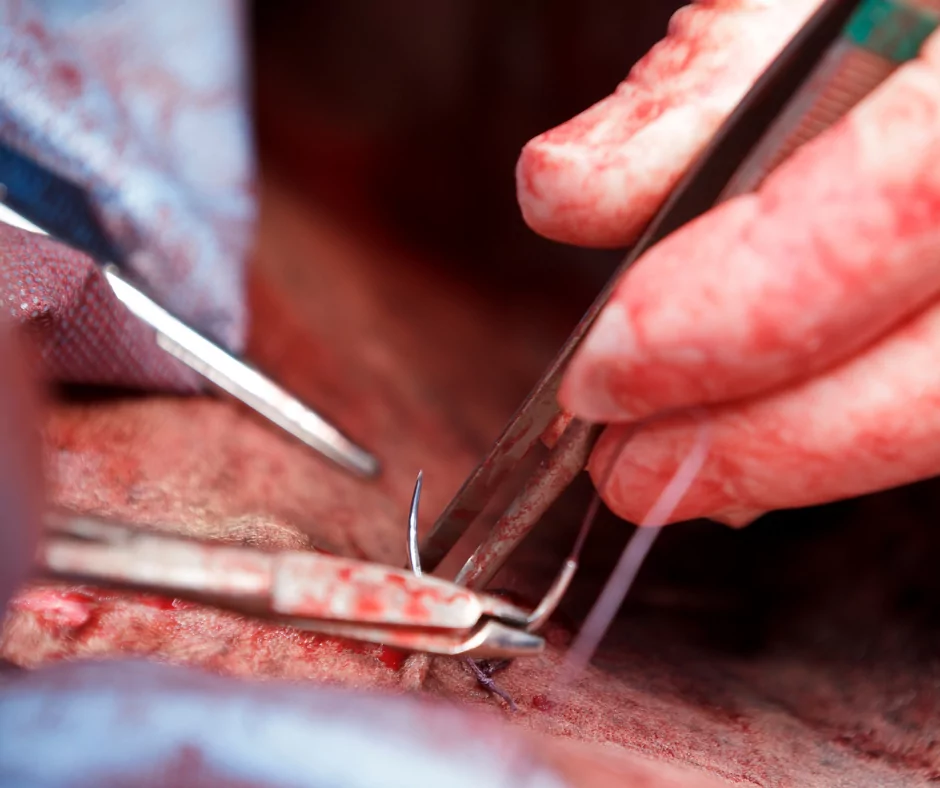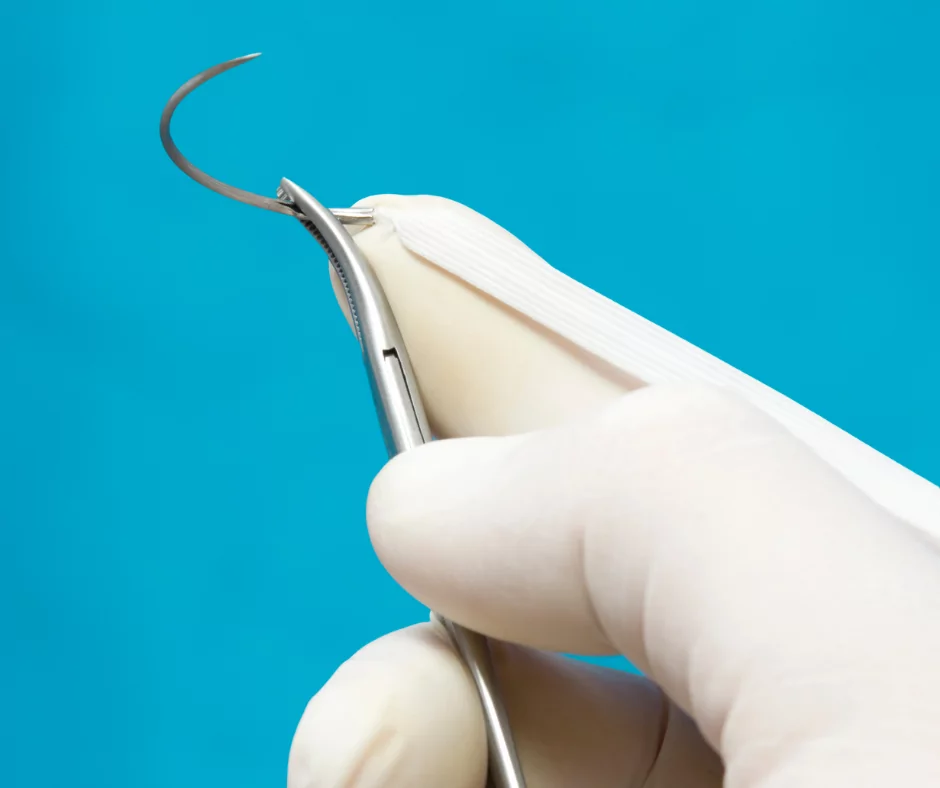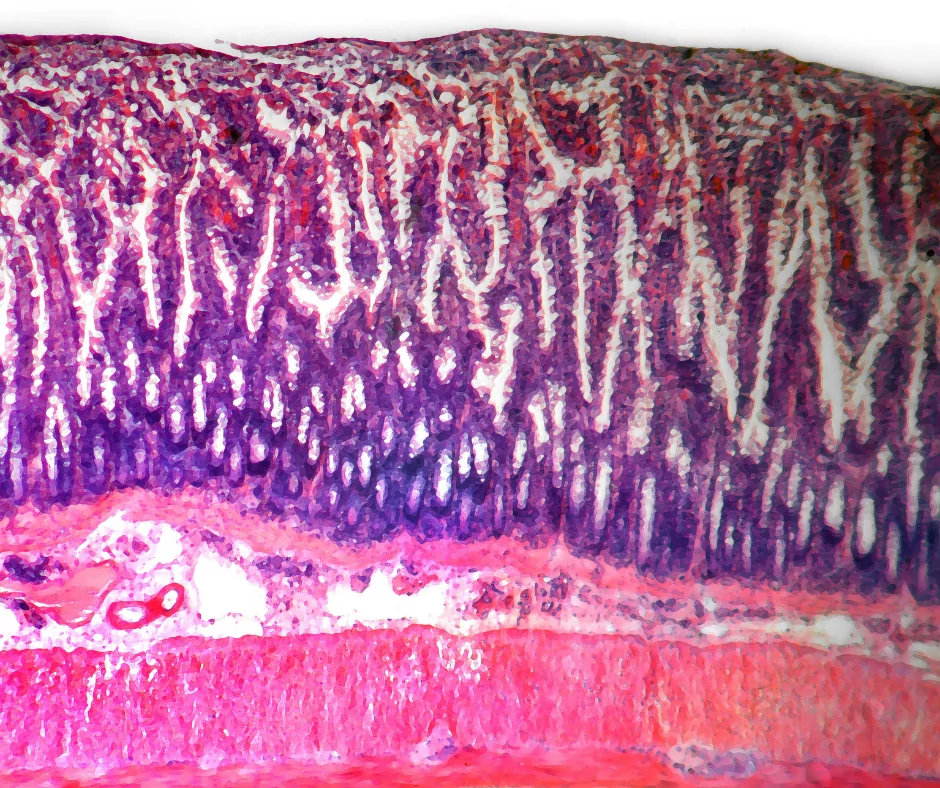An Overview of the Cushing and Connell Suture Patterns
Both the Cushing suture pattern and the Connell suture technique are continuous sutures, most often used in hollow organs like the stomach, uterus, or urinary bladder.
As all medical health professionals know, the suture technique necessary in any given surgical operation will vary according to the wound type and area.

The Properties of the two Suture Patterns
All suture patterns have some properties that are important to know. These properties will say something about what the suture pattern can do and help any professional determine when to use which type of suture pattern. Properties for a pattern could be:
- The technique: Is the suture pattern continuous or interrupted.
- Depth: How far into the skin or tissue should the suture go.
- Usefulness with suture material: Any pattern needs to be able to be completed with the available suture material.

The Cushing suture pattern and the Connell suture pattern share many of the same properties. Both are continuous. This means no knots are made as the suture pattern is completed until the incision line’s end is reached. The suture material is at no point cut or broken as the suture is placed.
Both suture patterns are inverting. Using an inverting suture pattern means that the sutures will turn some of the tissue inward. That’s useful, especially in hollow organs, to prevent any liquid that may be present inside the lumen from escaping through the incision. This could, for example, be fecal matter, which could cause a lot of havoc within the abdomen.
They’re both beneficial to ensure a continuous blood supply to the area. With some types of suture patterns, the blood supply to an incised area can become compromised due to tightening the suture knots. Compromised blood supply can, in turn, lead to necrosis (death) of the tissue, as well as other complications.
With continuous suture patterns, there are no suture knots, which will allow the blood to flow more freely into the tissue and especially the incision area to ensure the best and fastest healing process.
General Recommendations When Performing the two Suture Techniques
As with all suture patterns, it is limited by the skills of the professional making the suture. Therefore it is good to keep some general recommendations in mind when making the Cushing or Connell suture patterns:

Parallel lines
When the suture bites into the skin, make sure it is always parallel to the incision edge. Obviously, this can be difficult to visualize when first starting the suture pattern. Still, as you go further down the incision, you should be able to see three parallel “lines”—one incision line in the middle and two “dotted” lines running parallel to the incision.
The right amount of skin
Try to permanently bite the same amount of skin on each side of the incision line. You should also remember that the farther away the bites are placed from the incision line, the more tissue is inverted. It’s all about choosing to bite the right amount of skin.
If you don’t bite enough skin, the suture pattern won’t be stable, and you are at risk of it opening up. There’s also an increased risk of fluid from inside the hollow organ flowing out through the sutured incision line. Too much bite and too much skin will be inverted, possibly causing unnecessary tension. Therefore, always try to bite the same amount of skin on each side of the incision.
Relieve the tension
Too much tension and the sutures will be pulled through the tissue, not enough, and the incision will open up. It’s all about getting the right amount of tension. Adjust the pressure with each bite as you complete the suture pattern. That’s far easier than adjusting it all when the pattern is complete.
Cushing Suture: The Depth and Technique

A Cushing suture pattern is initiated by making a knot. Either above the incision or buried into the tissue at one end of the incision linen. Hereafter a simple throw is made across the incision. The suture pattern then runs parallel to the incision line and takes tissue bites on either side of the incision, all the way to the end, at approximately 5mm apart.
When using the Cushings suture technique, the sutures only penetrates into the submucosa of the hollow organ. It, however, does not penetrate the lumen (the empty space in the middle of the organ).
This pattern will invert the tissue, which means that if done correctly, you should only visualize the knots on either end of the incision.
Connell Suture: The Depth and Technique
The Connell suture pattern is in many ways similar to the Cushing suture pattern in how it is made. But, when using the Connell Suture it, also passes through the lumen of the hollow organ.
This will also cause an inverting of the tissue, but this one will be slightly bigger than with the Cushing suture pattern, as more tissue will be involved.
The Procedures These Suture Patterns are Used for
Both suture patterns are made for low tension areas and where it is necessary to close the incision line quickly. We’ve already covered the difference between the two in the above paragraph, but that’s why the Connell suture pattern is often used for the first layer of closing. The incision and the Cushing suture pattern are then used in the outermost layer.
Often the two suture patterns are used in hollow organs like:
- The urinary bladder
- The gall bladder
- The intestines

The Pros and Cons of Continuous Sutures
When choosing a suture pattern, it is always the surgeon who has the final say. But here are some of the benefits of choosing a continuous suture pattern, like the Cushing or Connell sutures.
- They’re the fastest type of suture pattern to use.
- They are more economical (less suture material is needed).
- They’re often easy to learn how to do.
But as with all decisions, there are also some consequences when choosing a continuous suture pattern:
- They can only be used in areas with little tension.
- Pulling too tightly when placing the suture can cause the incision to pucker (wrinkled).
- If one part of the suture breaks, the whole incision can come undone.
Watch this video for a visual representation of how the Cushing and Connell Suture Patterns are performed.
If you liked this video, watch “Spaying a big dog: ovariohysterectomy” on our blog.
